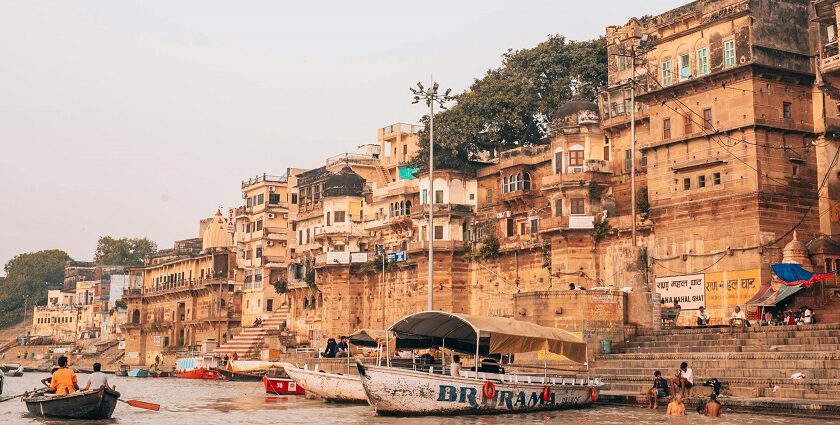What is the best time to visit Varanasi? It depends on the kind of experience you seek in this timeless city. Whether it’s the cool, calm mornings of winter, the vibrant festivals of spring, or the quieter monsoon months filled with introspection, each season brings its charm. The Ganges flows the same, but the mood shifts with the weather, offering misty ghats in December, colourful celebrations in March, or peaceful walks in July. Understanding Varanasi’s seasonal rhythm can help you align your visit with your travel intentions.
Winter In Varanasi: October To March
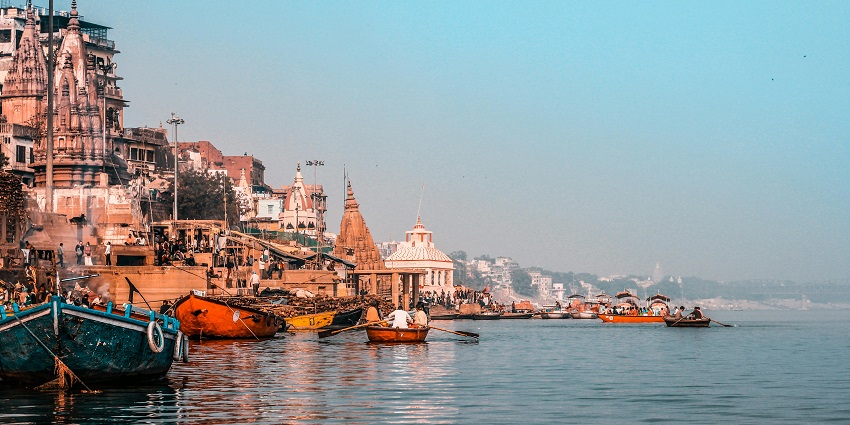
Winter is when the city feels open and welcoming for long days of exploration. Temperatures range from 12°C to 25°C, making walks along narrow alleys and ghat steps pleasant. The crisp air is ideal for sightseeing without fatigue. Mornings are magical—sunrise boat rides reveal a misty Ganges and peaceful sounds from the ghats. Light layers in the evening are enough to keep warm. Winter is also festival season in Varanasi. Dev Deepawali lights up the river in November, Makar Sankranti fills the sky with kites, and Maha Shivaratri celebrates Lord Shiva with music and vibrant processions.
Summer In Varanasi: April To June
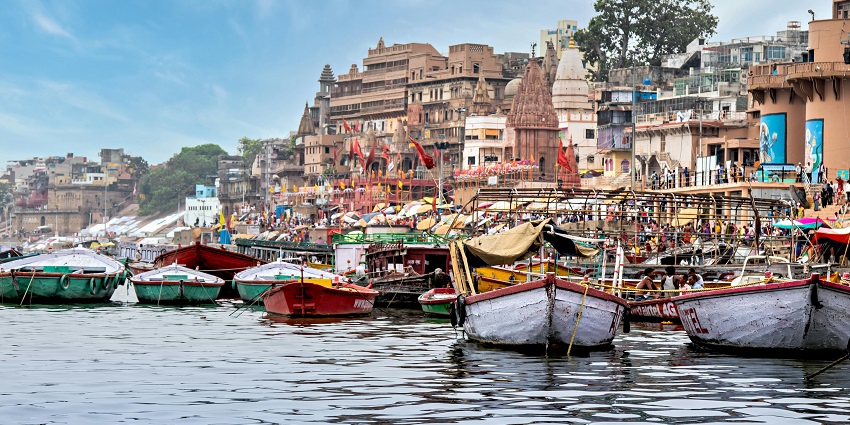
By late April, the heat is here to stay. Temperatures can soar past 40°C, so planning your day wisely becomes essential. Early mornings and evenings are the most comfortable times for exploring, while the intense midday sun is best avoided. Spend those hours indoors—listening to classical music in a shaded courtyard or visiting a quiet museum. The upside? The ghats are less crowded, temple queues are shorter, and interactions with locals feel more relaxed. This season offers a slower, more personal experience of Varanasi, ideal for those who don’t mind the heat and prefer peaceful exploration.
Monsoon In Varanasi: July To September
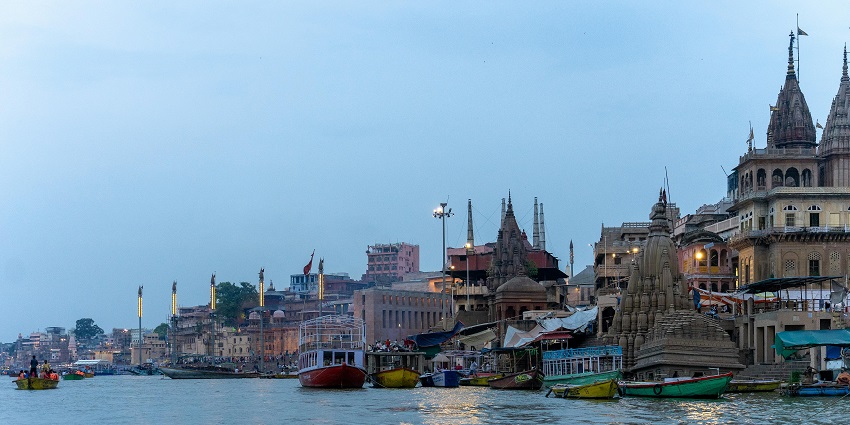
Photo: Patricia Luquet / Pexels
When the first rains arrive, Varanasi shifts into a slower rhythm. Sudden showers cool the air and turn the surrounding landscape a vibrant green. The ghats glisten with wet stone, and the Ganges rises, often touching the upper steps. With fewer visitors, the city feels more intimate. Walking the narrow lanes becomes a meditative experience—less crowded, more observant. You notice the little things: a child playing in puddles, rainwater weaving down the steps, or the comforting scent of chai wafting from a roadside teashop. Monsoon offers a quieter, more reflective side of Varanasi for those who seek it.
Festival Seasons And Cultural Energy
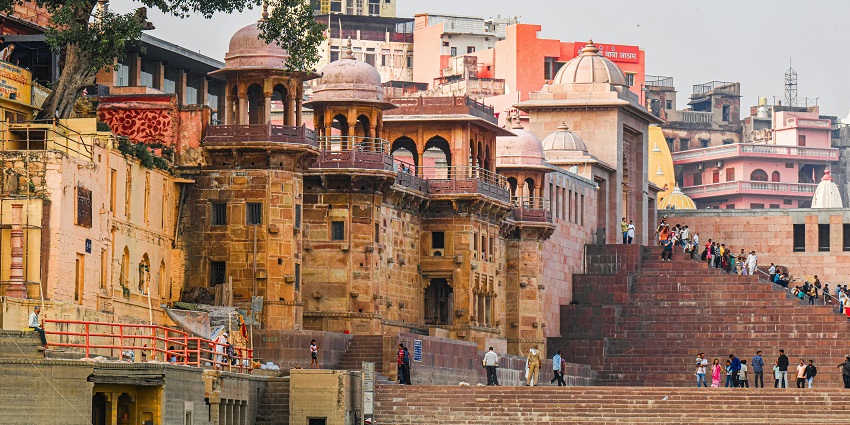
For many travellers, the answer to what is the best time to visit Varanasi lies in its festivals rather than its seasons. November’s Ganga Mahotsav brings five days of music, dance, and local crafts to the riverbanks. During the same month, Diwali lights up the ghats with countless diyas. March brings Holi, turning the streets into a celebration of colour and joy. September or October may host Durga Puja with grand idols and processions. Each festival shows a different side of the city—some vibrant and loud, others deeply spiritual—offering unforgettable experiences despite the extra crowds and busy streets.
Tips For Every Season
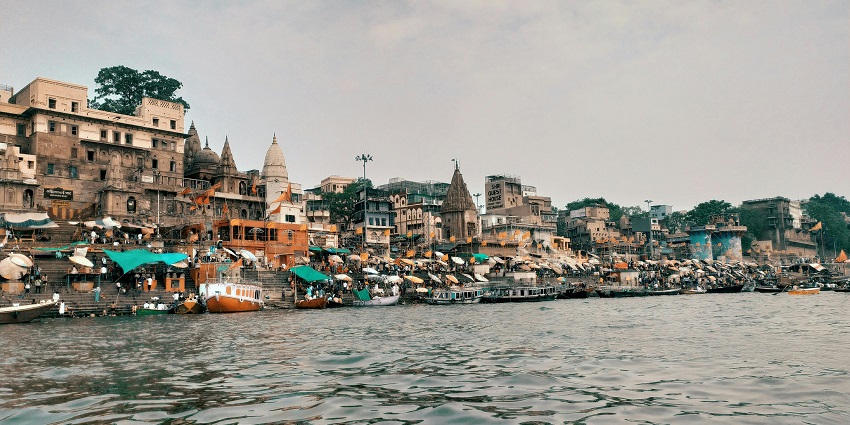
No matter when you go, these seasonal tips for visiting Varanasi will help you stay comfortable and make the most of your trip.
- Winter: Pack layers for the evenings and book early for festivals.
- Summer: Plan your activities early or late in the day and keep hydrated.
- Monsoon: Protect valuables from rain and wear footwear that grips well on wet stone.
- Festival Periods: Secure accommodation in advance and allow extra time for moving through crowds.
Deciding what is the best time to visit Varanasi depends on the kind of experience you seek. Winter brings festivals and clear skies, summer offers quiet reflection, and monsoon softens the city’s pace. No matter the season, the spirit of Varanasi remains unchanged — the Ganges flows, bells ring, and stories unfold. Plan your journey with TripXL and discover a version of Varanasi that becomes uniquely yours.
Cover Photo: Rachel Claire / Pexels


 WhatsApp
WhatsApp
 Twitter
Twitter
